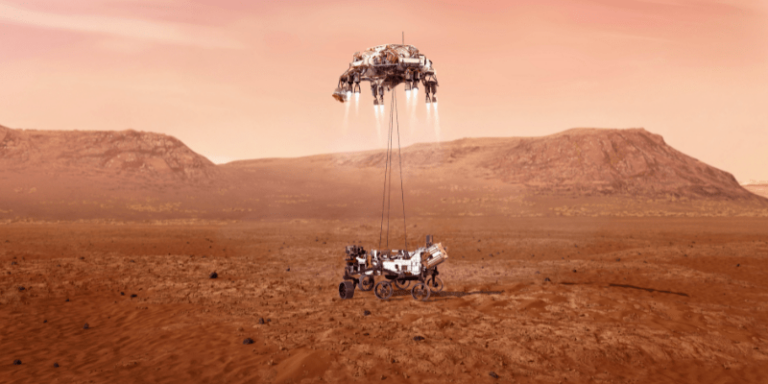Mysterious Mars Weather: Just How Well Do We Understand Climate?
The mysteries of weather on Mars might mean we don’t understand Earth as well as we think.
By: Onar Åm | December 4, 2019 | 430 Words

(Xinhua/NASA/JPL-Caltech via Getty Images)
Mars is a simple planet compared to Earth. There is almost no atmosphere, there are no oceans, and the planet has only trace amounts of water. Its climate should be very simple to model, predict, and understand, but Mars is periodically hit by dust storms that can engulf the entire planet and no-one understands why.
Dust Devils
On Earth, dust storms are driven by wind, but Mars has less than 1% of Earth’s atmosphere, so it’s hard to understand how the thin air can lift any dust at all and how dust storms far more extensive and violent than anything found on Earth are physically possible.
Strangest of all are the dust devils. We have them here on earth too, but on Mars, one can sometimes observe thousands of dust devils, separated by only a few hundred feet. That’s not supposed to happen.
The Opportunity Mystery
The mystery deepens when we consider what happened to the Mars Exploration Rover mission. Two rovers, Spirit and Opportunity, were launched in 2003 and landed on Mars in 2004. Although both were equipped with solar panels, NASA expected them to be covered in dust quickly and predicted that they would run out of power after three months on the Martian surface.
As expected, the solar panels became ever more covered in dust, until one day they suddenly were clean and charging normally. No-one understood why, but the surprise cleaning continued to happen, and the rovers worked for about 60 times longer than they had been expected to!
Electricity Plays a Role?
Some scientists are growing more aware of the role that electricity may play in the weather of Mars. Most of the planet-engulfing dust storms coincide with major electrical storms on the sun. Those who are old enough to remember the old tube TVs know that they were dust magnets. Similarly, by antistatic treatment, one can clean the surfaces and prevent dust from sticking. Could such electric phenomena be operating on Mars, on a planetary scale?
The solar activity connection certainly warrants further investigation. If it is found to be an essential factor in Martian weather, it opens a can of worms on Earth because no climate model takes electricity into account. Climate science contrarians have long claimed that the sun plays an important and unappreciated role in our planet’s physical wellbeing. The dust mysteries on Mars suggest they may be right.
One thing is sure: Our lack of understanding of the climate on a simple planet such as Mars calls into question the claims of a comprehensive understanding of our own complicated Earth.
















